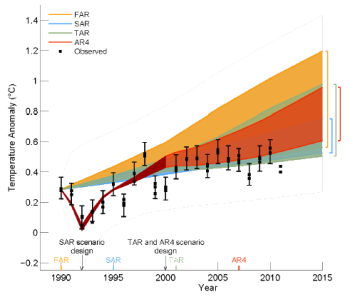A new National Research Council report honestly admits the possibility that the Sun might be an important factor in climate change.
Pigs fly! A new National Research Council report honestly admits the possibility that the Sun might be an important factor in climate change.
The article, from NASA, itself is a remarkably fair assessment of the field’s state of knowledge (which in truth is quite spotty since we really do not yet understand what is going on with the climate). This, as far as I can remember, is the first time in years, since the early 1990s before the global warming advocates took over the climate field and shut down debate, that an official article from a government organization like NASA has been so open about these issues and not toed the politically correct line that “fossil fuels and carbon dioxide are causing global warming and don’t you dare say anything different!”
Pigs fly! A new National Research Council report honestly admits the possibility that the Sun might be an important factor in climate change.
The article, from NASA, itself is a remarkably fair assessment of the field’s state of knowledge (which in truth is quite spotty since we really do not yet understand what is going on with the climate). This, as far as I can remember, is the first time in years, since the early 1990s before the global warming advocates took over the climate field and shut down debate, that an official article from a government organization like NASA has been so open about these issues and not toed the politically correct line that “fossil fuels and carbon dioxide are causing global warming and don’t you dare say anything different!”

